When strategizing the layout of your garden, it is only natural to crave immediate visual progress. However, it is important to note that various tree species have varying rates of growth.
Therefore, in the following, we are going to cover some of the fastest-growing trees for your year-round yard to give you a better idea of what your options are.
1. Hybrid Poplar

Regardless of what kind of poplar tree you are planning on growing, choosing the proper location is crucial. Hybrid poplar trees need neutral or acidic fertile soil.
In addition to that, they need direct sun and enough water to keep the roost constantly moist. You can also apply a 2-inch layer of mulch around the roots to help the plant conserve moisture.
- Growth rate: Fast
- Average size: Usually around 45 feet tall
- Best for Grow Zones: 3-8
- Years to bear: n/a
2. Thuja Green Giant

The greatest thing about the Green Giant Thuja is that they adjust fine to different types of soils. Even though they prefer slightly acidic soil, they will do just fine in both very acidic soil and alkaline soil.
When planting the tree, make sure the soil is moist but not oversaturated and soggy. Therefore, you should avoid lower areas of your yard as water could collect.
- Growth rate: Fast
- Average size: Usually around 60 feet tall
- Best for Grow Zones: 5-9
- Years to bear: n/a
3. Flowering Dogwood

One of the main things to keep in mind when it comes to flowering dogwood is that, especially during the summer, they rely on frequent watering. In addition to that, they must be planted in full sun.
Although they tend to grow well in various soil conditions and climates, they prefer humus-rich, well-drained, slightly acidic soil.
- Growth rate: Moderate
- Average size: Usually between 20 and 40 feet tall
- Best for Grow Zones: 3-8
- Years to bear: n/a
4. Yew

The greatest thing about yew is that it can be grown in full sun to full shade. The soil, on the other hand, should be moist but quick to drain.
Furthermore, if you want to keep the branches upright, you should tie them together. However, most standard yew trees can even grow on their own and require minimal care.
- Growth rate: Slow
- Average size: Usually between 35 and 65 feet tall
- Best for Grow Zones: 4-8
- Years to bear: n/a
5. Eastern Red Cedar
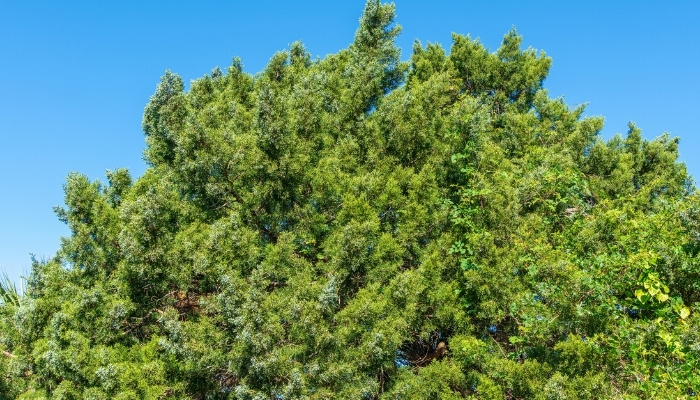
The Eastern red cedar can tolerate almost any growing conditions aside from full shade. However, it does best in moist, deep, alluvial, well-drained soil. The pH value of the soil should ideally be between 4.7 and 7.8.
This tree can grow in direct sun as well as partial shade. Moreover, the frequency of watering can be reduced after about a year.
- Growth rate: Slow
- Average size: Usually between 40 and 50 feet tall
- Best for Grow Zones: 2-9
- Years to bear: n/a
6. Cherry Blossom
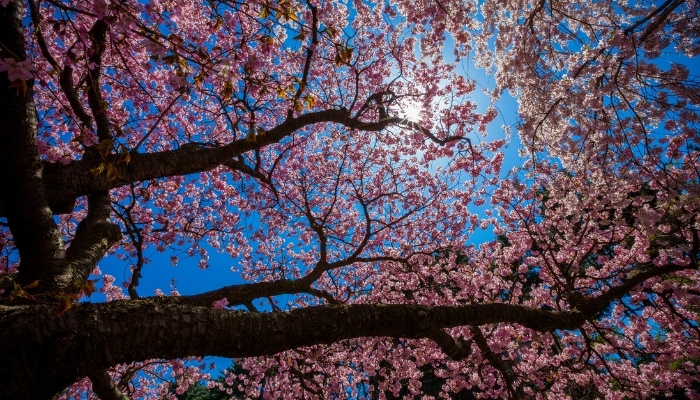
When it comes to cherry blossoms, care tips are pretty straightforward. The main one to remember is that they don’t like being in soggy soil. Therefore, this tree should only be watered during the hot summer months.
In addition to that, you should also feed the tree with a general granular fertilizer once a year, preferably during the spring.
- Growth rate: Moderate
- Average size: Usually around 50 feet tall
- Best for Grow Zones: 5-7 and 9-10a
- Years to bear: 5-9 years
7. Bald Cypress
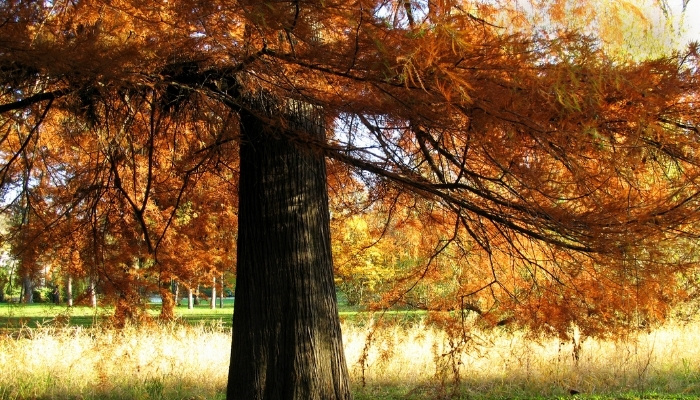
If you are planning on planting bald cypress, make sure that the soil is fast draining but moist. Furthermore, the soil for this tree should always be acidic.
Even though this tree can tolerate soil that is slightly acidic, you definitely don’t want to waste time planting it in extremely alkaline soil. Bald cypress requires minimal care during the winter.
- Growth rate: Moderate
- Average size: Usually between 50 and 70 feet tall
- Best for Grow Zones: 4-10
- Years to bear: n/a
8. Red Maple
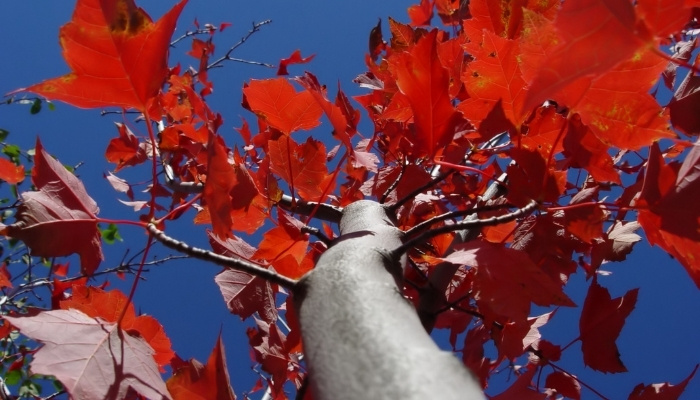
Although red maples prefer soil that is moist, they will be able to grow just fine in dry soils as well if you are willing to irrigate them on a regular basis. Ideally, they should be watered deeply and slowly.
Once you have established the desired level of moisture, make sure to keep the soil that way. One thick layer of mulch around the base will help reduce moisture loss to evaporation.
- Growth rate: Moderate
- Average size: Usually between 40 and 60 feet tall
- Best for Grow Zones: 3-9
- Years to bear: n/a
9. Oakland Holly

One of the biggest advantages of growing Oakland holly is that it can grow in various conditions. Except for extremely high temperatures, Oakland holly will easily grow regardless of the period of the year you plant it.
Even though it shouldn’t be in full shade, it can tolerate part sun to full sun. Although they prefer soil that is slightly acidic, they tolerate pretty much any well-drained soil.
- Growth rate: Moderate
- Average size: Usually between 15 and 20 feet tall
- Best for Grow Zones: 6a-9b
- Years to bear: n/a
10. Thundercloud Plum
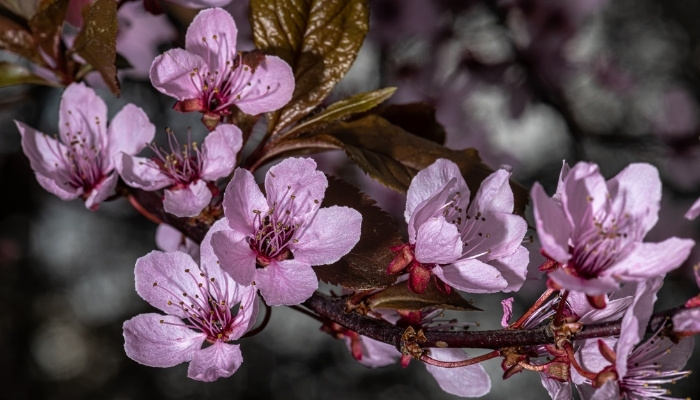
Watering tips might be the most important tips to remember when it comes to thundercloud plum. This tree should always be watered regularly during its growing season, especially the first one.
When watering, you shouldn’t give it more than an inch of water each time as the soil needs to be moist but never flooded.
- Growth rate: Moderate
- Average size: Usually between 15 and 25 feet tall
- Best for Grow Zones: 5-8
- Years to bear: n/a
11. Lemon Bottlebrush
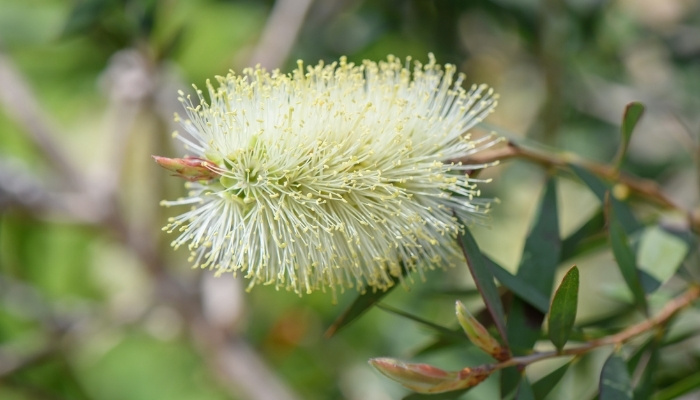
The lemon bottlebrush requires regular watering and prefers well-drained, slightly acidic soil. Moreover, the tree should always be fertilized once a year until it matures.
Once the plant has bloomed, you should trim it or prune it to ensure healthy growth. In other words, make sure to remove the old flowers after every flowering.
- Growth rate: Moderate
- Average size: Usually between 10 and 20 feet tall
- Best for Grow Zones: 8b-11
- Years to bear: n/a
12. Rainbow Eucalyptus
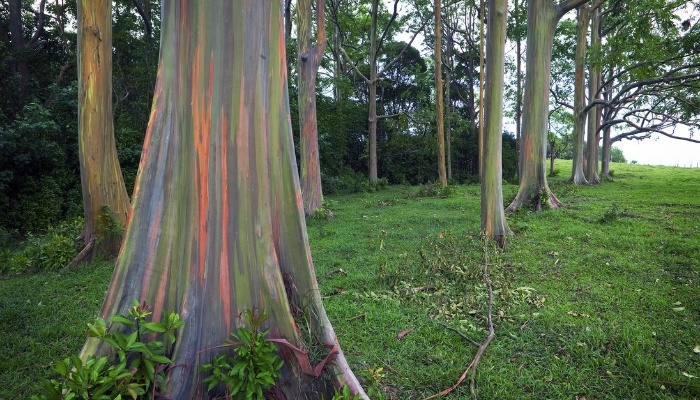
Although rainbow eucalyptus trees are known for being able to tolerate drought to a certain degree, they need to be watered regularly during the first year.
Keep in mind that these trees are not able to handle conditions such as prolonged flooding, and rainbow eucalyptus trees require a humid climate.
- Growth rate: Fast
- Average size: Usually around 100 feet
- Best for Grow Zones: 9-11
- Years to bear: n/a
13. Weeping Willow
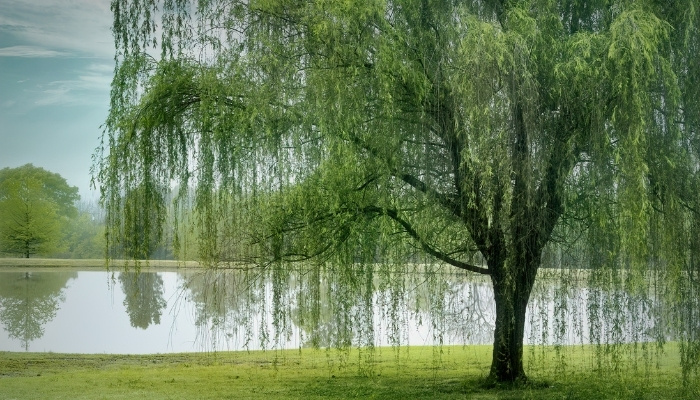
These trees always make a great option as they are not only beautiful but can also tolerate soils from alkaline to acidic. However, when planting a weeping willow tree you should use a little bit of compost and all-purpose fertilizer.
Ideally, the weeping willow tree should be planted in either direct sun or partial shade.
- Growth rate: Fast
- Average size: Usually between 30 and 40 feet tall
- Best for Grow Zones: 4-10
- Years to bear: n/a
14. Limelight Hydrangea

Even though it is unusual for this type of plant, the limelight hydrangea can tolerate drought once it is fully established. When it comes to watering, it is important to remember that you should do it thoroughly and deeply.
In addition to that, allow the soil to dry a little bit before you start watering again. This tree should be pruned annually either in early spring or late winter.
- Growth rate: Moderate
- Average size: Usually between 6 and 8 feet tall
- Best for Grow Zones: 3a-9a
- Years to bear: 1 year
15. Colorado Blue Spruce
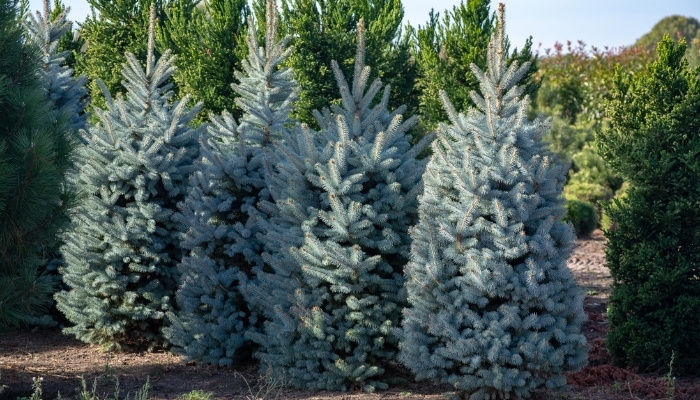
The care for Colorado blue spruce is very simple and straightforward once the tree is fully established. Until then, always water the tree regularly as the soil should always be moist.
The best way to keep the soil moist for an extended period of time is by applying a layer of organic mulch around the base of the plant.
- Growth rate: Moderate
- Average size: Usually between 50 and 75 feet tall
- Best for Grow Zones: 3-7
- Years to bear: n/a
16. Elberta Peach
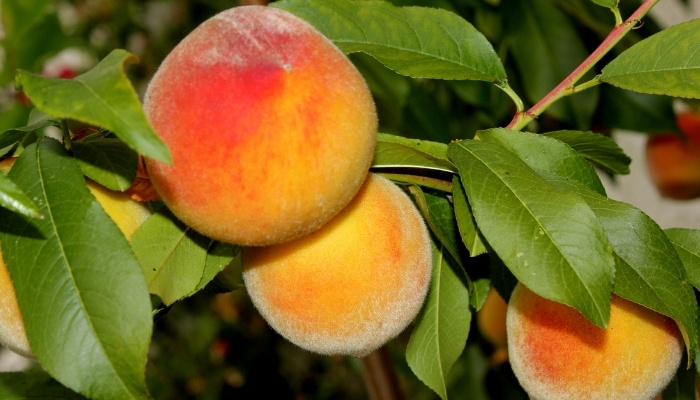
The Elberta peach performs the best when planted in sandy, well-drained soil. However, as this tree isn’t drought tolerant, you shouldn’t plant it in dry areas where there is very little moisture.
Furthermore, this tree should be planted in an area with direct sunlight for at least 6 hours a day. Elberta peach trees should also be pruned once a year, preferably during the early spring.
- Growth rate: Moderate
- Average size: Usually between 15 and 25 feet tall
- Best for Grow Zones: 5-9
- Years to bear: 3-4 years
17. Leyland Cypress
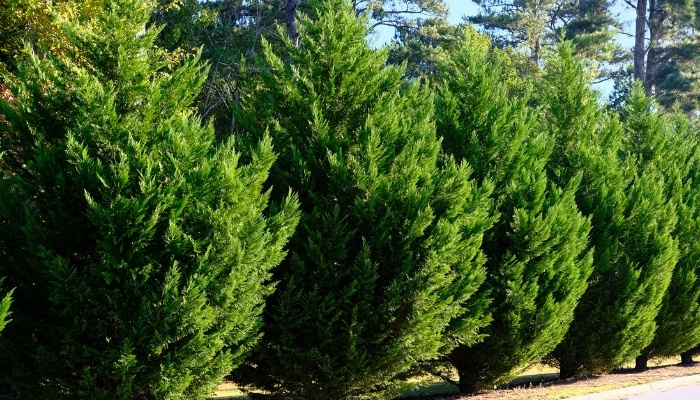
The number one watering tip to keep in mind when it comes to Leyland cypress is to water it thoroughly during prolonged drought. Still, overwatering is also something to avoid as it could lead to root rot.
When watering, make sure to give it about an inch of water at most. Remember that the Leyland cypress doesn’t need to be fertilized regularly.
- Growth rate: Fast
- Average size: Usually between 60 and 70 feet tall
- Best for Grow Zones: 6-10
- Years to bear: n/a
The Bottom Line
All in all, if you are looking for a fast-growing tree that will add a really nice touch to your yard, any of the options mentioned above would make an outstanding choice.
The best way to choose the ideal option for you is to consider all the factors such as climate, location, time, etc. After that, you should be able to choose the perfect fast-growing tree for your yard!
